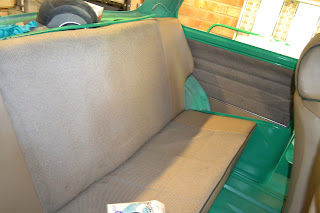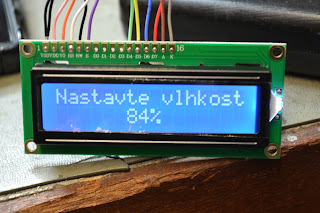 Here's a few pictures of what's been absorbing most of my time lately....
Here's a few pictures of what's been absorbing most of my time lately....It doesn't look like much, but there's all new brake lines fitted, lots of parts cleaned and painted and reunited with the car!
To clean up a lot of the metal parts, I've taken to electrolysis...
This involves making a mixture of about 10% ordinary washing soda (you can get this from Sainsbury's in the UK, £1.20 in my local store for a 1kg bag) and tap water.
You'll need a nice clean piece of ordinary mild steel (Don't use stainless). I used a plate, you can see it in the centre of the tank. And you'll need a power supply (I used my adjustable bench supply)
Connect the clean steel to the positive terminal, this becomes our sacrificial anode. You'll probably realise from the name, that this isn't a piece of steel you'll want to use again....
 Attach the rusty part to the negative pole, and drop it in the tank.... Keep a small distance between the part and the steel plate.
Attach the rusty part to the negative pole, and drop it in the tank.... Keep a small distance between the part and the steel plate.Switch the supply on, and adjust the voltage until a bit of current flows. Small bubbles will rise to the surface. I found good results with about an amp of current flowing.
You'll want to do this in a very well ventilated area, as the bubbles are hydrogen and oxygen, and PLEASE switch off the supply before adding or removing things from the tank, a spark could ignite the gas.....
After a new hours remove your once rusty part.
You'll need to clean off the solution, dry it and paint it to prevent it rusting rapidly.
What's happened to the rust? It's on the anode ....
This is after just a couple of days of use... you can clean it up with a wire brush or grinder and it'll go again :)

















































